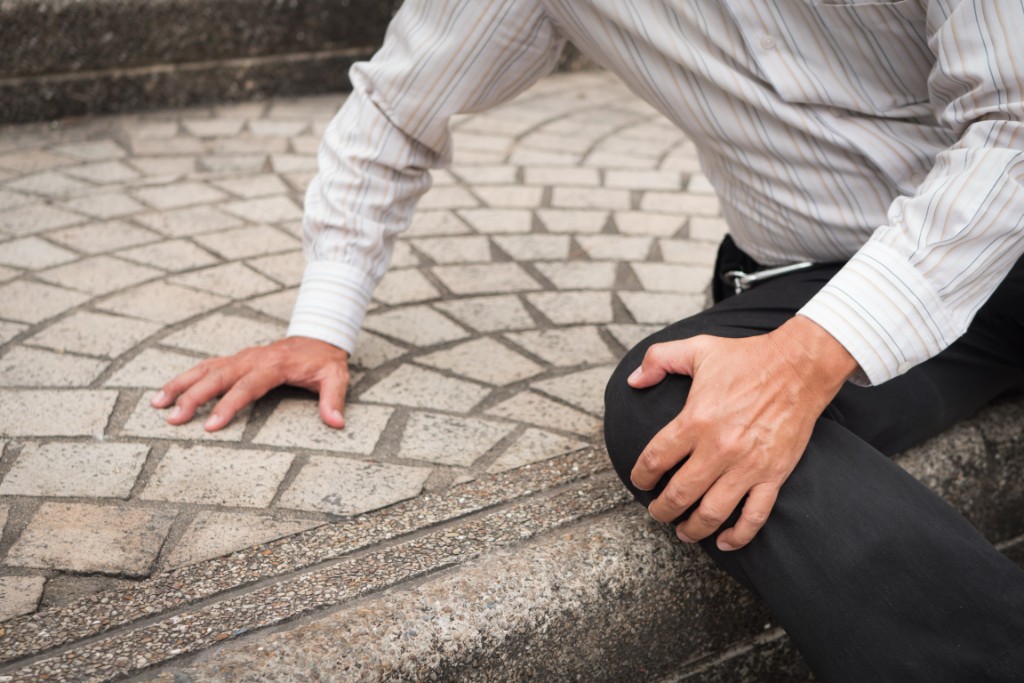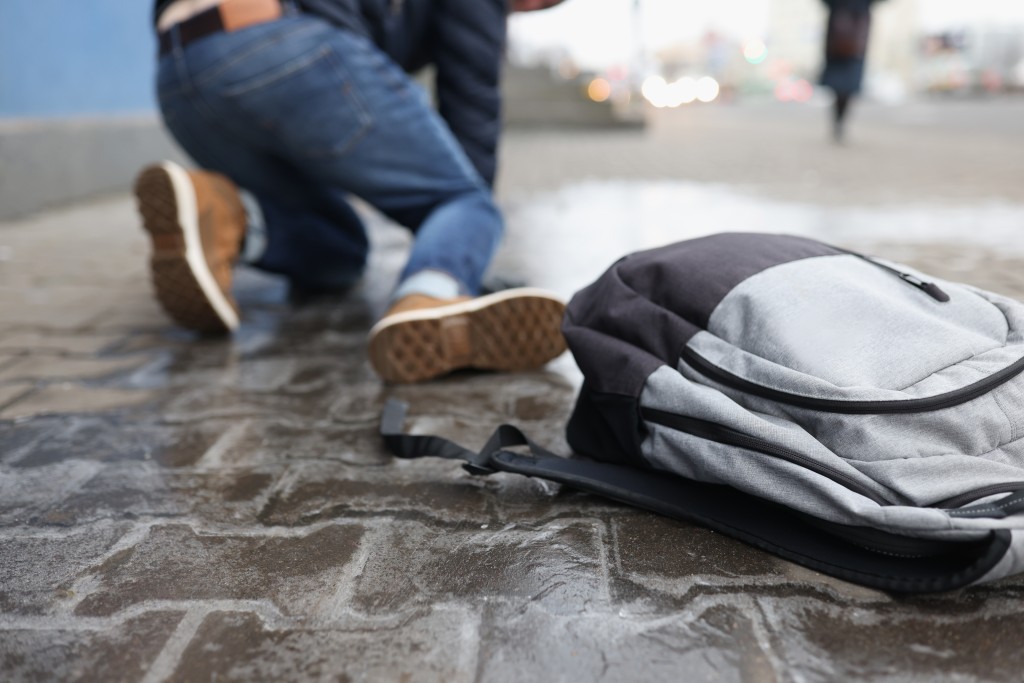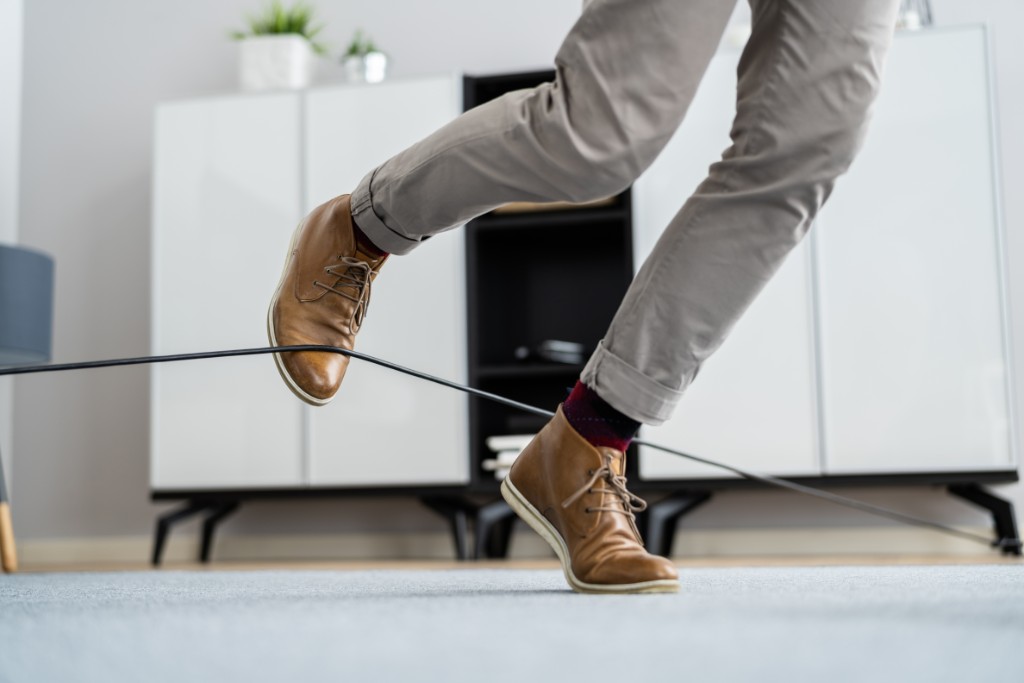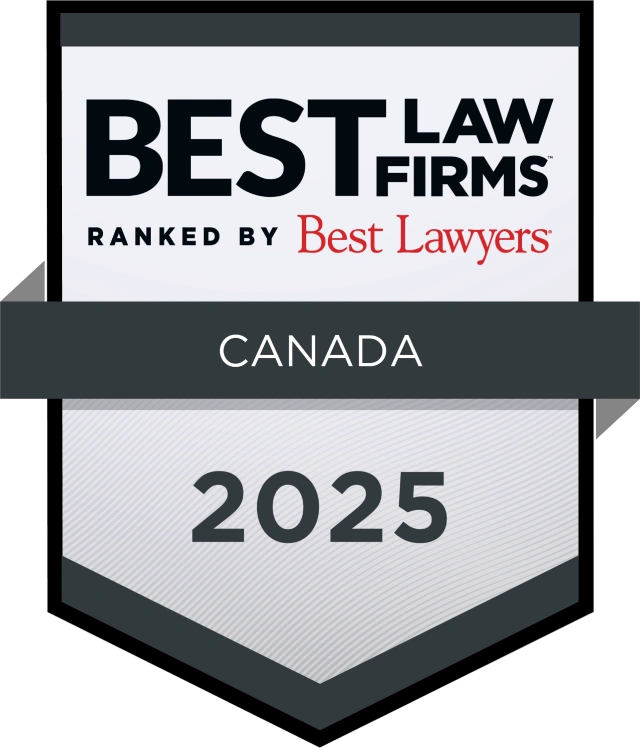Slip and Fall Accident Lawyers Canmore
Get legal answers now. Speak to our lawyers.
Speak with our Canmore slip and fall accident lawyers and get legal answers to your slip and fall accident questions.
Table of Contents
Slip and fall accidents can happen to anyone, anywhere, and at any time. Regardless of age, physical condition, or level of personal caution, the negligence of property owners and occupiers can lead to dangerous, hazardous conditions that could lead to injury-causing slips and falls on their premises.
The hazards that frequently lead to serious slip and fall accidents might sound innocent enough, but if not properly maintained or repaired by the property’s occupier, these commonplace features of commercial or residential premises could lead to severe, life-changing accidents. Maintenance hazards that commonly cause unexpected slip and fall accidents include:
- Recently mopped floors
- Poorly maintained staircases
- Broken or missing handrails
- Debris or objects on the floor or ground
- Cluttered walkways
- Insufficient lighting
- Loose floorboards
- Uneven surfaces
- Loose carpeting
- And more
Additionally, many slip and fall accidents responsible for injuries requiring visits to the emergency room are caused by icy, snowy conditions. As it happens, dozens of falls caused by extreme cold conditions lead to injuries requiring hospitalization each winter.
When the person or organization responsible for a property’s upkeep fails to perform routine safety inspections, conduct regular maintenance touch-ups, address hazardous conditions on-site, or warn visitors about potential risks, slips and falls can occur. And depending on the conditions of both the accident victim and the accident scene, these slips and falls can lead to serious injuries.
Our Canmore slip and fall accident lawyers believe that no one should be forced to incur financial losses because of someone else’s negligence. In accordance with the provincial Occupiers’ Liability Act, the parties and/or entities that own, oversee, maintain, or control access to a commercial or residential property have a responsibility to actively reduce the risks to human health on their premises. If a property’s “occupier” fails to uphold the duty of common care they are responsible to provide to their premises’ lawful visitors and an injury-causing accident ensues, the at-fault occupier could be considered negligent. As a result, they could be responsible for financially compensating visitors who have been injured on their premises.
Our slip and fall accident lawyers serving Canmore believe that no one should be forced to pay for someone else’s errors, omissions, or lack of judgment. To learn how we may be able to help you get the compensation you deserve after being injured in a slip and fall accident, contact us today.
Do Not Wait – Call Us Today
Even if you are unsure whether your injury-causing slip and fall accident occurred as a result of an occupier’s negligence, consider scheduling a free initial consultation with our Canmore slip and fall accident lawyers. We are standing by to provide you with personalized legal feedback based on the specific details of your case.
Learn about options for financial recovery that might be available to you by taking advantage of a free initial consultation with our slip and fall lawyers serving Canmore today.
Notable Achievements
Awards and Recognitions
Proud to be one of Canada’s oldest personal injury law firms. The firm was founded in 1959 and has now grown to numerous offices across Canada. We have cumulatively secured over $1 billion for thousands of Canadians and are proud to maintain a high standard for our professional services without compromising on care or compassion.
Read More On slip and fall accident Claims
Here are some blogs on slip and fall accident claims.

slip and fall accident
|
April 30, 2025
Proving Negligence in an Alberta Slip-and-Fall Case
During our lifetime, we all have falls. Most are minor and result in no injuries. Unfortunately for some people, a slip and fall could instead…

slip and fall accident
|
December 13, 2024
When to Contact a Calgary Slip and Fall Lawyer After a Slip and Fall Accident
Almost all of us can remember a slip and fall or trip and fall accident in our lives. In the best cases, you experienced minimal…

slip and fall accident
|
November 29, 2024
Differences Between Slip and Fall and Trip and Fall Injuries
“Slips and falls” generally refer to someone falling due to a slippery substance, like ice or snow on stairs, a parking lot, or a walkway,…
Watch Our slip and fall accident Videos
Check out our video series where we break down many interesting topics about slip and fall accident claims in Alberta.
Commonly Asked slip and fall accident Questions
Here are our most asked questions on slip and fall accident claims.
What should I do after a slip and fall accident in Calgary?
If you are involved in a slip and fall accident in Calgary, your first priority is to ensure that you are safe and able to receive any medical attention or other assistance that may be required. After your immediate needs are met, you should identify the hazard that caused you to fall and any witnesses to the fall or the hazard. Photographs of the hazard are particularly helpful. The primary burden on a plaintiff to prove liability in a slip and fall claim is to show that the premises on which you fell was in a hazardous state.
What if I slipped or tripped on public property?
If you slipped or tripped on public property, it is important to contact a lawyer in a timely manner for advice on how to proceed. Some public property, such as hospitals or schools, may not have any special laws or rules that differentiate them legally from other premises occupiers. Some public property, such as municipalities, do. These special rules often involve reporting requirements – essentially telling the municipality about the slip or trip. These reporting requirements have deadlines measured in weeks rather than years and must be acted on quickly. If you have tripped or slipped on public property in Calgary, you can call one of our slip-and-fall accident lawyers for a free consultation.
Is there a time limit for bringing a slip and fall claim?
There are time limits for bringing slip and fall claims. The general time limit that applies to the majority of claims is two years, as set out in the Limitations Act, RSA 2000, c L-12. There are exceptions to this time limit, including for minors or people with a legal disability. There are also other time limits that may apply, such as notice provisions to be provided to a municipality if the slip and fall occurred on its property.
What makes a slip-and-fall case strong?
A strong slip-and-fall case has the following legal elements: a duty of care, breach of duty, causation of injury or damage, and substantial damages. A duty of care is owed by a premises occupier to users of the premises. A breach of that duty occurs when the premises is in a hazardous state that should have been prevented or fixed by the occupier. Causation is a logical connection between the hazard and your slip and fall – for example, the presence of ice caused you to slip. Substantial damages in a personal injury claim refer primarily to pain and suffering, wage loss, out-of-pocket expenses, or expected care costs.
How is compensation for slip and fall cases determined?
Compensation, or damages, are determined by dividing your case up into segments known as heads of damage. This includes specific quantification of:
- Pain and suffering;
- Past wage loss;
- Future wage loss;
- Out-of-pocket expenses;
- Expected future care;
- Loss of housekeeping capacity; and
- An in-trust claim for those who went above and beyond to care for you in your time of need.
What injuries commonly occur after a slip and fall accident?
Slip and fall accidents can result in orthopedic injuries such as broken bones or torn ligaments. Even without a broken bone, slip and fall accidents can cause back pain or neck pain, which sometimes becomes chronic. People can hit their head in a slip-and-fall accident and sustain a concussion or mild traumatic brain injury. Slip and fall accidents can also result in spinal cord injuries.
What is negligence in a slip and fall claim?
Negligence is a general legal term that was developed under common law to capture the duty of care that people owe to those who might reasonably foreseeably be injured by their actions. In slip and fall claims, we often deal with liability under the Occupiers’ Liability Act, RSA 2000. The duties created by both the common law of negligence and the Act are very similar and require an occupier to take reasonable care to make sure the premises are safe for visitors. If a visitor slips and falls because the occupier failed in this duty, the occupier is negligent.
Is a slip and fall accident the same as a trip and fall accident?
The legal analysis is the same for a slip and fall and a trip and fall accident. The difference is the mechanic of the fall and often the type of offending hazard. For example, you are more likely to slip on ice than on a bunched-up carpet, and you are more likely to trip on a bunched-up carpet than on ice. The key to both types of cases is whether the premises were in a hazardous condition and whether that hazardous condition caused you to fall.
What factors can impact the compensation for a slip and fall accident?
Both liability and damages impact the compensation for a slip and fall. Liability refers to fault. A slip and fall accident is a fault-based accident, which means the occupier must be at fault for you to get compensation. In a settlement, the parties will assess the risk of fault being found. In some cases, it is clear that there is a liability. In some cases, it is clear that there is not. Many cases fall into the gray area in the middle. How injured you are and how it affects the quantum of your damages also impacts your compensation. The bigger the damages, all else being equal, the bigger the settlement.
How can a personal injury lawyer help me with a slip and fall claim?
A personal injury lawyer is extremely important in a slip-and-fall claim. Slip and fall claims are technical. They can require specific reporting to the occupier. The analysis of the hazard and standard of care required of the occupier can be complex. Finally, the assessment of damages requires a legal opinion. Insurance company representatives are well versed in all these areas of the law, as are the lawyers they hire to defend the occupier. A personal injury lawyer on your side can help make things even so you may receive the compensation you deserve.
SLIPPED, TRIPPED, OR FELL IN CANMORE?
Book a FREE Consultation Now
We’re ready to act quickly
We’ll work to prove negligence and get you compensated for your fall injuries.



